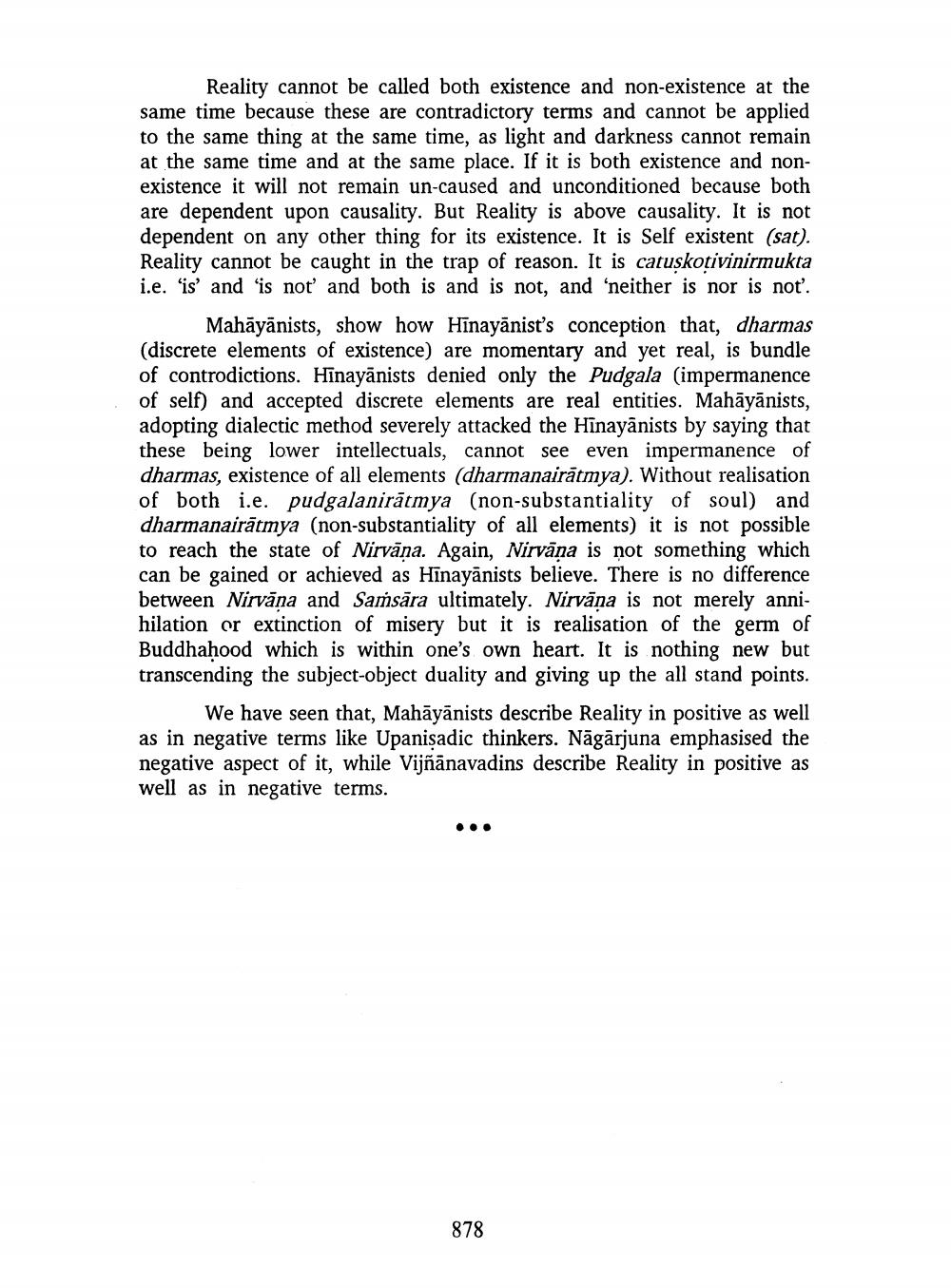________________
Reality cannot be called both existence and non-existence at the same time because these are contradictory terms and cannot be applied to the same thing at the same time, as light and darkness cannot remain at the same time and at the same place. If it is both existence and nonexistence it will not remain un-caused and unconditioned because both are dependent upon causality. But Reality is above causality. It is not dependent on any other thing for its existence. It is Self existent (sat). Reality cannot be caught in the trap of reason. It is catuskotivinirmukta i.e. 'is' and 'is not and both is and is not, and 'neither is nor is not'.
Mahāyānists, show how Hinayānist's conception that, dharmas (discrete elements of existence) are momentary and yet real, is bundle of controdictions. Hinayānists denied only the Pudgala (impermanence of self) and accepted discrete elements are real entities. Mahāyānists, adopting dialectic method severely attacked the Hinayānists by saying that these being lower intellectuals, cannot see even impermanence of dharmas, existence of all elements (dharmanairātmya). Without realisation of both i.e. pudgalanirātmya (non-substantiality of soul) and dharmanairātmya (non-substantiality of all elements) it is not possible to reach the state of Nirvana. Again, Nirvana is not something which can be gained or achieved as Hinayānists believe. There is no difference between Nirvana and Saṁsāra ultimately. Nirvana is not merely annihilation or extinction of misery but it is realisation of the germ of Buddhahood which is within one's own heart. It is nothing new but transcending the subject-object duality and giving up the all stand points.
We have seen that, Mahāyānists describe Reality in positive as well as in negative terms like Upanisadic thinkers. Nāgārjuna emphasised the negative aspect of it, while Vijñānavadins describe Reality in positive as well as in negative terms.
878




